|
Printables |
PowerPoints |
Online exercises |
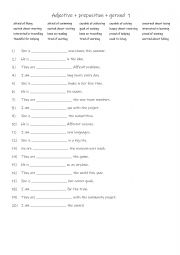
|
Adjective + preposition + gerund 1
Learning adjective + preposition + gerund is essential for natural and fluent English. These structures are common in everyday speech, writing, and exams. They help express ideas accurately, but since prepositions don�t always follow logical rules, mastering them prevents common mistakes and improves overall communication.
Level: intermediate
Age: 10-100
Type:
Downloads: 113
|
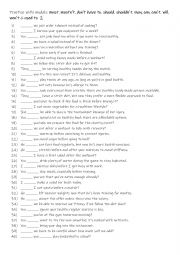
|
A1+-A2 Practise with modals must, mustn�t, don�t have to, should, shouldn�t, may, can, can�t, will, won�t & used to 2
First, students need to familiarise themselves with the modals and their use. Then they read the sentences to see which one is needed to complete the sentence. Answers on page 2.
Level: elementary
Age: 8-100
Type:
Downloads: 115
|

|
A2-B1 Identifying 4 types of sentences 1
Learning to identify the four types of sentences enhances communication, writing, and grammar skills, helping students express ideas clearly and effectively. It also improves reading comprehension by allowing them to interpret tone and intent in texts. A strong understanding of sentence structures leads to better academic performance, particularly ...
Level: elementary
Age: 9-100
Type:
Downloads: 107
|
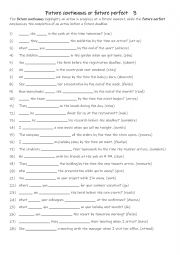
|
A2+-B1 Future continuous or future perfect 3
First, students need to familiarise themselves with the 2 tenses and their use. Then they read the sentences to work out which tense is needed to complete the gap-fill using the infinitive in (). Each tense is used 12 times! Answers on page 2
Level: intermediate
Age: 9-100
Type:
Downloads: 121
|
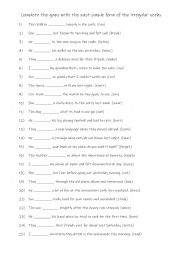
|
Complete the gaps with the past simple form of the irregular verbs
Students complete the gaps with the past simple form of the irregular verbs. Answers on page 2
Level: elementary
Age: 10-100
Type:
Downloads: 118
|
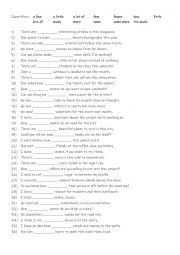
|
A2-B1 Practise with 13 quantifiers
Students familiarise themselves with the 13 quantifiers and their usage. Then they read the sentences to see which one is suitable to complete the gap-fill. Answers on page 2.
Level: elementary
Age: 9-100
Type:
Downloads: 102
|
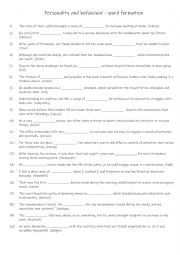
|
B1 Personality and behaviour - word formation
Understanding word formation allows students to expand their vocabulary, enabling them to express themselves more precisely and creatively. Knowing how to manipulate words helps them create varied sentence structures, making their writing more engaging and dynamic. Mastering word formation is key to achieving higher levels of language proficiency, ...
Level: intermediate
Age: 8-100
Type:
Downloads: 108
|
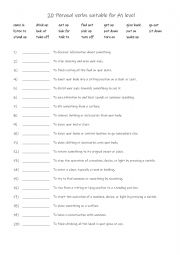
|
20 Phrasal verbs part 1 a worksheet
These phrasal verbs cover a range of everyday situations and are commonly used in both casual and more formal contexts, making them useful for learners aiming to improve their English proficiency; they are suitable for CEFR A1 level. Students match the phrasal verbs to their definitions. Answers on page 2. All of the phrasal verbs used in this work...
Level: elementary
Age: 10-100
Type: worksheet
Downloads: 103
|
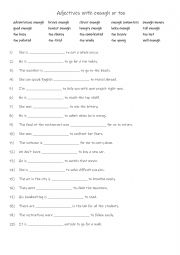
|
A2-B1 Adjectives with enough or too
Learning how to use adjectives with enough and to is important because it helps students express the right degree of a quality or characteristic. These constructions help them clearly communicate whether something meets, exceeds, or falls short of a certain standard or expectation. Answers on page 2.
Level: elementary
Age: 8-100
Type:
Downloads: 120
|
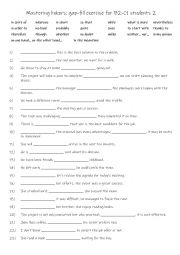
|
Mastering 23 different linkers gap-fill exercise for B2-C1 students
Learning these 23 linkers is essential because they enhance student�s ability to connect ideas, add variety to their writing and speaking, and make their communication more precise and coherent. By mastering these linkers, students can improve the clarity, fluency, and persuasiveness of their communication in both written and spoken English at ad...
Level: advanced
Age: 12-100
Type:
Downloads: 112
|
|
|
|
|












